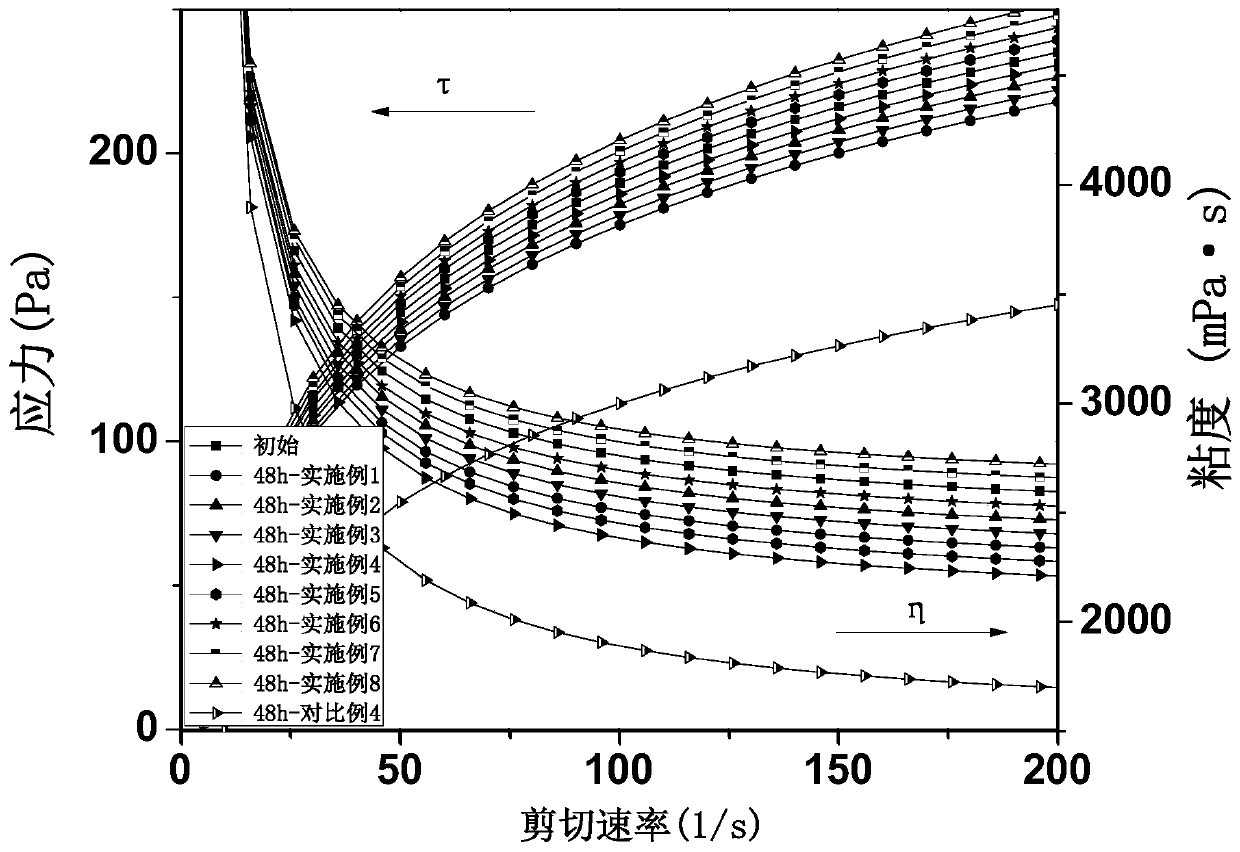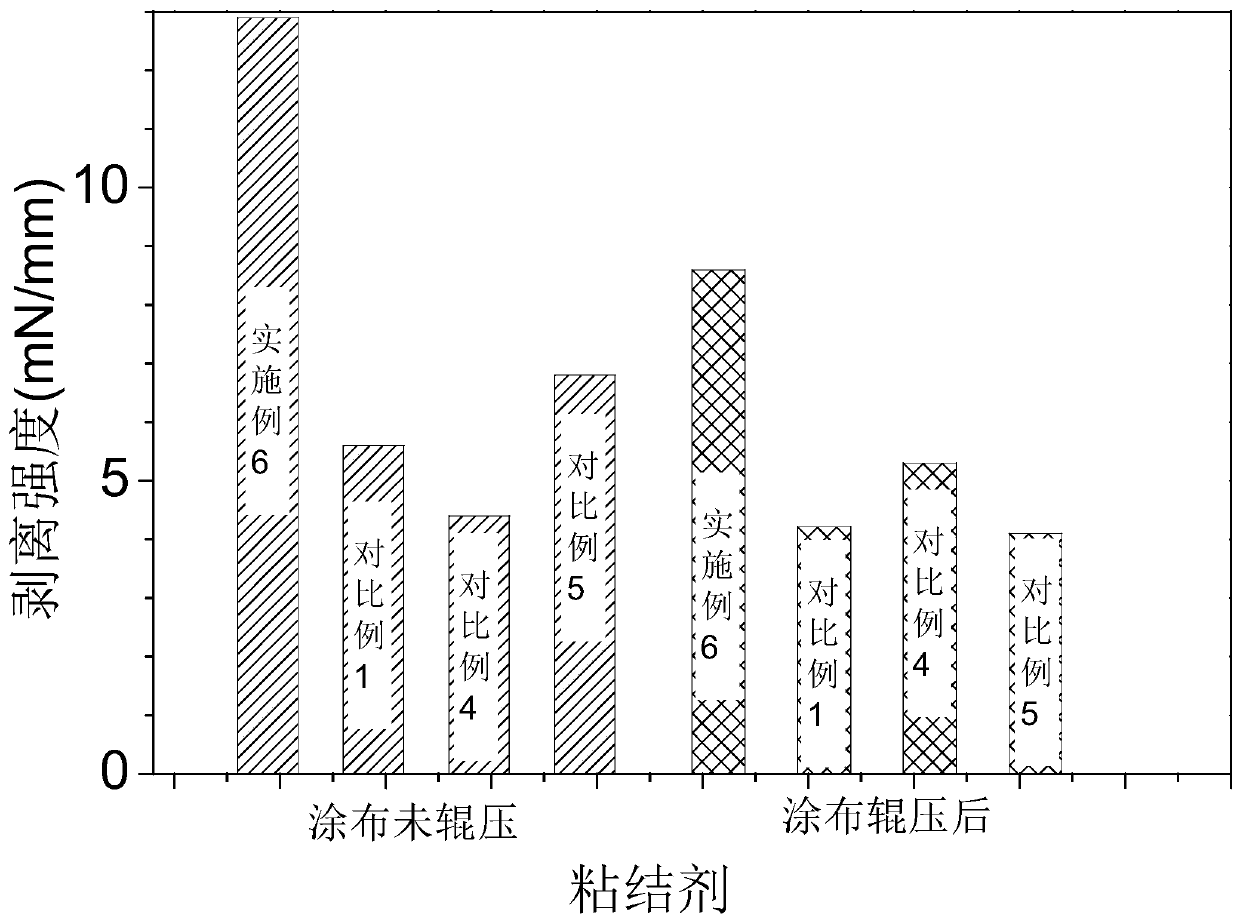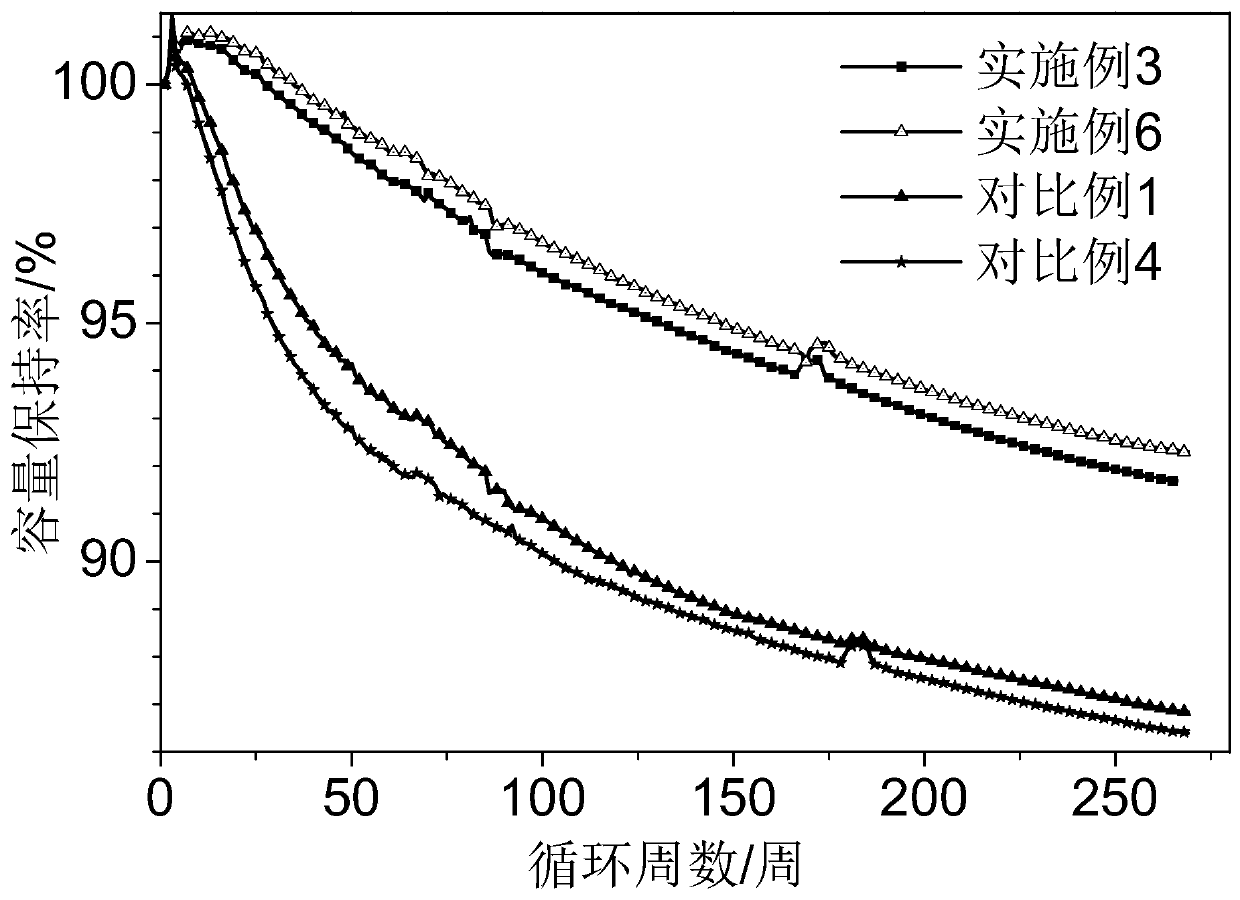Water-soluble adhesive for lithium ion battery, preparation method for water-soluble adhesive, electrode sheet and battery
A lithium-ion battery, water-soluble technology, applied in battery electrodes, non-aqueous electrolyte battery electrodes, secondary batteries, etc., can solve the problems of general CMC viscosity, capacity loss, high price, etc., and achieves simple preparation method and bonding strength. The effect of improving and good slurry stability
- Summary
- Abstract
- Description
- Claims
- Application Information
AI Technical Summary
Problems solved by technology
Method used
Image
Examples
preparation example Construction
[0068] The preparation method of lithium ion battery water-soluble binder of the present invention, adopts soap-free emulsion polymerization, comprises the following steps:
[0069] 1. At room temperature (20°C), put the solvent in a 2000L reactor, and in a state of stirring at a rotational speed of 100-300rpm, pass in nitrogen gas with a purity ≥ 99.9%, with a flow rate of 2000-4000L / H, and replace it for 0.5-2H , to remove water-soluble oxygen, by mass percentage: formula 1 monomer 5-75%, formula 2 monomer 1-35%, formula 3 monomer 5-65%, add to the solvent, continuously feed nitrogen, stir for 3 ~10h, mix uniformly to obtain a solution, the mass concentration of the solution is 10~30%.
[0070] The solvent is a water-miscible solvent: water, isopropanol or butanediol.
[0071] The formula 1 is: CHR 11 = CHR 12 -CN,
[0072] R 11 is H, Cl, Br or -CH 3 ,
[0073] R 12 is H, Cl, Br, -CH 3 or -C 6 h 4 -;
[0074] The formula 2 is: CHR 21 = CHR 22 -CONR 23 R 24 , ...
Embodiment 1
[0125] 1. Add 350 parts of pure water to the reaction kettle, stir at 100 rpm, feed nitrogen with a flow rate of 2000L / H, remove water-soluble oxygen for 1.5 hours, then add 55 parts of formula 1 monomer acrylic acid, 5 parts of formula 2 monomer N , N-diethylacrylamide, 40 parts of formula 3 monomer acrylonitrile, continuously blowing nitrogen, stirring for 3 hours, to obtain a solution.
[0126] 2. Continuously feed nitrogen, heat up the solution to 55°C at a heating rate of 1°C / min, add 0.5 parts by mass fraction (10%) of the initiator solution benzoyl peroxide, initiate the reaction for 10 hours, and obtain the polymerized product .
[0127] 3. Decompress the polymerization product at 60° C. with a vacuum pump until the vacuum degree is lower than 0.1 MPa, and remove the residual monomers of formula 1, formula 2 and formula 3.
[0128] 4. Neutralize the polymerized product at 50° C. with a lithium hydroxide alkaline aqueous solution to a pH of 7.5 to obtain a viscous wate...
Embodiment 2
[0132] 1. Add 350 parts of pure water to the reaction kettle, stir at 300rpm, feed nitrogen gas with a flow rate of 4000L / H, remove water-soluble oxygen for 2 hours, then add 55 parts of formula 1 monomer acrylonitrile, 5 parts of formula 2 monomer N,N-diethylacrylamide, 40 parts of formula 3 monomer sodium acrylate, continuously blowing nitrogen, stirring for 10 hours, to obtain a solution.
[0133] 2. Continuously feed nitrogen, heat the solution to 55°C at a heating rate of 2°C / min, add 0.5 parts by mass fraction (10%) of the initiator solution dicumyl peroxide, initiate the reaction for 10 hours, and obtain polymerization product.
[0134] 3. The polymerization product is depressurized at 80° C. with a vacuum pump until the vacuum degree is lower than 0.1 MPa, and the residual monomers of formula 1, formula 2 and formula 3 are removed.
[0135] 4. Neutralize the polymerized product with aqueous sodium hydroxide alkali solution to pH 7.5 at 80° C. to obtain a viscous water...
PUM
| Property | Measurement | Unit |
|---|---|---|
| Intrinsic viscosity | aaaaa | aaaaa |
Abstract
Description
Claims
Application Information
 Login to View More
Login to View More - R&D
- Intellectual Property
- Life Sciences
- Materials
- Tech Scout
- Unparalleled Data Quality
- Higher Quality Content
- 60% Fewer Hallucinations
Browse by: Latest US Patents, China's latest patents, Technical Efficacy Thesaurus, Application Domain, Technology Topic, Popular Technical Reports.
© 2025 PatSnap. All rights reserved.Legal|Privacy policy|Modern Slavery Act Transparency Statement|Sitemap|About US| Contact US: help@patsnap.com



